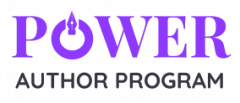NEW: Guided Publishing Experience: POWER Anthologies – Apply NOW!
Day 5: Let’s Talk About Organization
I promised you that I would show you a way to write your book even if you don’t have great writing skills, and I will.
I call it building your book, because, like the snowflake method for novel writing, this method takes several passes at your book, starting with the broadest strokes and becoming ever more detailed and granular.yujkjnbghyujkmnbghujmnbvghj
The method also trains you to keep track of your sources, which in turn makes it easier to cite them and to find just the right quote, fact, or figure to back up your arguments when you come to write up your manuscript.
This method relies on you following a few simple organizational principles from the outset and sticking with them to the end.
Whether you’re a naturally tidy person, or usually a little more freestyle, I want you to commit right now to organising your source material as you go, and to get into the habit of filing them using a specific naming convention.
Start a folder for your book, and within that folder create another called sources.
Start a spreadsheet or text file with a table. Label the columns:
| Date | Source Title | Author(s) | Publishing Date | Location | Format | Page/ Timestamp | Quotation | Comments |
If you use Google Docs, you can make a copy of my super-simple Source Tracker Google sheet. Just add your sources, and make a duplicate of the sheet every time you want to start a new project.
Any time you come across something of interest to you that may be relevant to your book, add a line to the table.
Make a note of the date you accessed the source, especially if it’s an electronic source, as you will use that in your bibliographies if the publication date is not available. Copy the URL or title, author, publisher, and publication date (or whatever publication details pertinent to the source type) into the source columns.
Copy and paste exact quotes, facts, and figures into the quotation column, and note any thoughts and comments sparked by the material in the final column. I get asked often if it’s okay to just paraphrase the source here, and if you’re adding something from memory, you may have to do that. But where the source is to hand, copy/paste or type the accurate quote.
Why?
You can’t easily recreate an accurate quote from a paraphrased entry later, but you can easily paraphrase the quote in your work.
Keeping this single file from the outset and having the discipline to add to it every time you read a source will save you a lot of frustration later.
You can save web pages, cut and paste source material into a Word file, or save pdfs etc within your sources folder. However you save things, and however you organize them, take the time to add them to your master source list every time. You will be glad you did.
Your homework for today is to set up your book folder and source folder and reference list file.
Side Note: It doesn’t matter what you call the folder, you can change it later. If you have a title idea, use that. If not, just call it book-project, or anything that makes sense to you.
